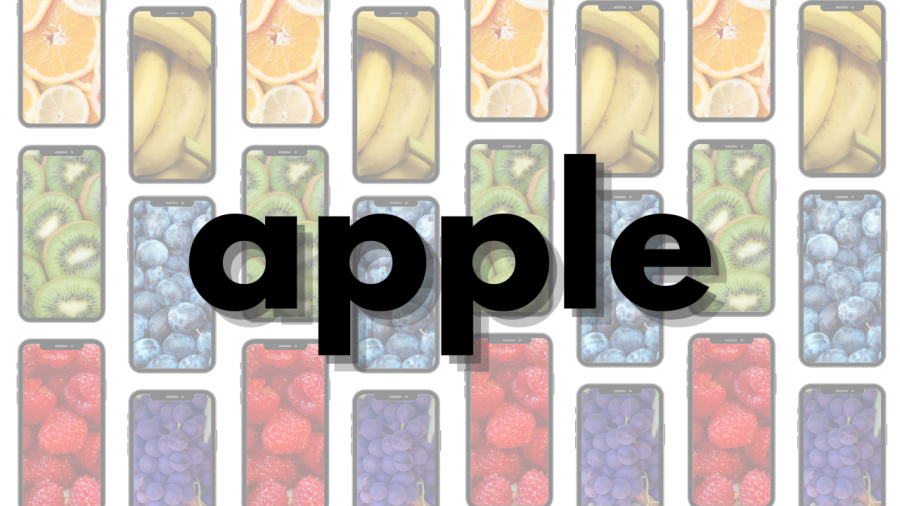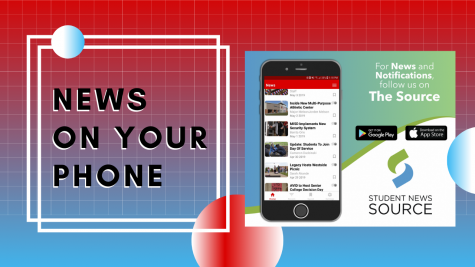Applesauce: Rundown of All 2020 Apple Events
Apple Inc. held three virtual events to release new technology and software
Apple has released many new features and products in 2020, but in a holistic view, it doesn’t seem too impressive in the grand scheme of the tech world.
October 22, 2020
The rapidly changing year of 2020 has been a year of massive updates and upgrades- in Apple standards at least. Many would say that, in fact, most of the new releases are quite underwhelming and nothing revolutionary. But nonetheless, Apple will still continue to receive and gain customers flocking to buy their products.
This year alone, the corporation has held three different “Apple Events,” in line with the 2-4 events held in past years. But of course, with COVID-19, changes were made, and all events were pre-recorded at the Steve Jobs Theater in Cupertino, Calif. Many viewers were able to join the livestream through YouTube, and enjoy the minimalistic cinematography and animations that are part of Apple’s signature look.
JUNE 22, 2020
The first ever pre-recorded Apple event was a delightful success, providing a new and refreshed experience for people watching from home. This first event of the year was predominantly software-based.
iOS 14 brought us the ability to dismiss calls, add homepage widgets, as well as an app library, picture-in-picture for streaming & video calls, and App clips. In the initial announcement of all software updates, only developers of apps had access to the beta versions. In turn, the hype around this update did not reach the masses until the full release later in the year.
iPadOS included many of the same features as its iPhone counterpart, with the redaction of the home screen widgets. The main iPad-specific update was a feature called “scribble,” which is essentially for those with the Apple Pencil. In any text field where one would traditionally type, users now have the ability to write in (or “scribble”) what they want to input. In theory, this would reduce the need to put down the Apple Pencil to type something, increasing productivity.
WatchOS 7 takes advantage of a lush ecosystem of third-party apps and complications. Other small updates include new cycling routes, built-in sleep tracking, and … a hand-washing timer? Who says technology can’t be helpful and fun?
For all mac users, macOS Big Sur brings many new design-oriented changes. Many native apps got redesigned icons, giving a fresh look to the new floating dock also included in the update. Within those native apps, many windows received a lighter and more transparent look, along with more rounded corners. Taking a note from iOS, the mac has a new control center and notification center. The former consolidates many menu bar items into a single spot for easy access. The latter combines widgets and notifications into a single column, sorted by most recent. Finally, users are able to receive privacy reports for each website and to monitor the security of their passwords.
In the only hardware announcement of the entire event, Apple made the most substantial change to their mac lineup. They announced that they would be ditching Intel’s processor (used in multitudes of Apple’s past computers since 2007) in favor of their own Apple Silicon, an ARM-based processor. In short, this means that Apple will not have to depend on Intel to prepare chips for their computers, and roll out new products on their own schedule.
SEPTEMBER 15, 2020
The second event of the year saw two major physical products, and many other additional Apple “services.” The Apple Watch Series 6 & Apple Watch SE were cutting edge; but considering the dominance Apple has over the smartwatch market, it was not surprising in the least. With a new processor, always-on display, family setup, and new blood oxygen monitor (exclusive to the 6), it almost feels like overkill. But whether people are able to appreciate the full set of features on a device is hardly important to hot tech such as a new Apple Watch.
In addition to the existing native watch bands, Apple also announced the new “Solo Loop.” Made of “liquid silicone” the band is basically a single length of band with no clasp or hardware- simply slide it onto your wrist and it’s on. There are also a few other options with material used on the Solo Loop.
The only other physical item that was announced was the new iPad Air 4th Generation, which dons a new 10.9 inch display, complete with a A14 Bionic chip, and both FaceID & TouchID. Many new colors are also available such as a Sky Blue, Green, and a Rose-Gold.
Apple Fitness+ also made its debut, as a “world-class” Apple Watch-specialized program, with new workouts uploaded each week. It costs $9.99 per month, or $79.99 per year. This program will also be included in the final announcement of the event: AppleOne. AppleOne is a monthly/yearly subscription with tiers, including things such as Apple Music, Apple TV+, Apple Arcade, iCloud storage, Apple News+, and of course, Apple Fitness+. It’s also considered is a family service, and will be available for purchase later in the fall.
iOS 14 was also released to the public, and teenagers on TikTok went “bezerk” to redesign their home screen to their aesthetic heart’s content. Read more here.
OCTOBER 13, 2020
This (presumably) final Apple event of 2020, brought on a whole new lineup of iPhones, including the iPhone 12, iPhone 12 mini, and iPhone 12 Pro. These new phones include a new A14 Bionic chip, a Super Retina XDR display, a new Ceramic Shield front cover, new colors, and most importantly 5G support. Though 5G is not widely available currently, within the next two years, it is projected to be the next step in the service and cellular data industry. Additionally, the iPhone 12 Pro includes an exclusive “LiDAR Scanner” which aids in night mode photography and improved AR features.
In relation to the new phones comes MagSafe, which allows for native and third-party attachments to magnetically snap onto the backs of phones. These new attachments native from Apple include a sleeker Qi charger, cases, card-holders, and a charging case.
HomePod mini refreshes the original HomePod released in 2018. It’s minimalistic design, improved speaker systems, and (alleged) Siri improvements hope to refresh the large “trash can” style released two years prior. The original HomePod struggled to compete with the likes of the Amazon Alexa and the Google Home, due to its $299 (regular) and $99 (mini) prices.
(UPDATE: A special Apple Event took place on 11/10. Click here to learn more about the M1 Chip.)
(UPDATE: New Release from Apple took place on 12/10. Click here to learn more about the Airpods Max.)
Apple has released many new features and products in 2020, but in a holistic view, it doesn’t seem too impressive in the grand scheme of the tech world. Android has had widgets for over 10 years, and has a more fluid UI (not limiting users to Apple services, the deeper they get into the ecosystem.) Will Apple ever return to its groundbreaking tech reveals, or is their ingenuity a thing of the past?













